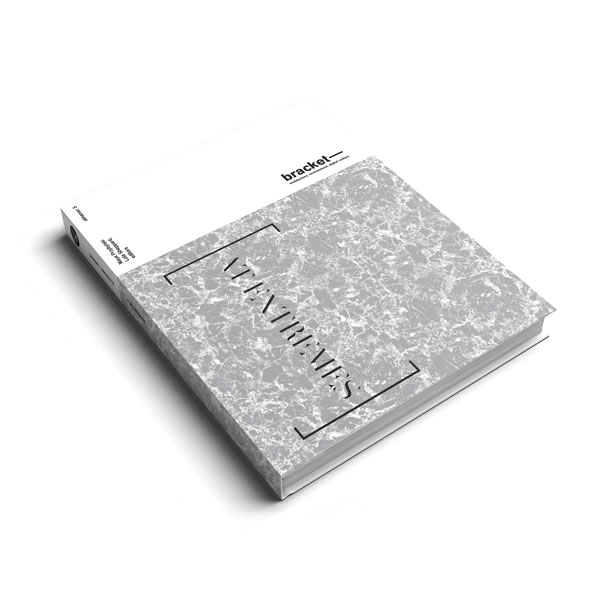Alan Berger Systemic Design Can Change the World
Towards Ecologically-Informed Methods: Design's Confrontation with Complexity
[bracket] | Maya Przybylski
As we understand an extreme as a position away from a balanced, predictable and familiar centre, it is reasonable to examine a condition of extreme as it relates to complexity. In particular, if complexity is understood as a characterization of the degree to which something is composed of many parts, the degree to which those parts are interrelated and, further, the sophistication of the processes that define these very relationships, it is possible to imagine moving towards an extreme complexity.
Acknowledging and managing increasingly higher levels of complexity within a design context is nothing new. Associative, or parametric, modeling is a well-established practice that places an interest in building complex, interrelated representations at the forefront. At one end of disciplinary activities, Building Information Modeling (BIM) combines physical and functional considerations of a design process by integrating spatial, material and performance-based representations in a single model. During the more exploratory phases of work, algorithmically generated forms and visualizations, whether through visual or procedural coding, have contributed to the creation of a variety of formal and organizational strategies. These, along with many others, have become reasonably accessible tools and techniques through which designers can confront complexity in their work.
Parallel to these developments focusing on the building scale, an effort within architecture, paired with the associated fields of landscape architecture and urban design, has also been interested in leveraging complexity, albeit at an entirely different scale. Specifically, these practitioners and researchers have become increasingly interested in developing ecologically-informed design strategies. These efforts are a revival and expansion of the inclusive design strategies originally outlined in such seminal texts as Ian McHarg's Design with Nature [1]; and as such, these contemporary projects acknowledge the lessons acquired from ecological science, presenting natural systems as dynamic, interconnected, resilient, complex and indeterminate, and attempt to position strategies for design within this flux.
Full content is available only for registered users. Please login or
Extract from

Related publications:
Bracket 1 [on farming]
Bracket 2 [goes Soft]
[1] McHarg, Ian. 1969. Design with Nature. New York: The Natural History Press.
[2] Waldheim, Charles. 2010. "On landscape, ecology and other modifiers to urbanism." Topos 71: 20-24.
[3] Thompson, Ian Hamilton. 2012. "Ten Tenets and Six Questions for Landscape Urbanism." Landscape Research 37 (1): 7 - 26.
[4] Easterling, Keller. 2005. Enduring Innocence: : Global Architecture and Its Political Masquerades. Cambridge: The MIT Press—. 1999. Organizational space. Cambridge: MIT Press.
[5] Berger, Alan. 2009. Systemic design can change the world. Amsterdam: SUN Publishers.
[6] Corner, James. 2006. "Terra Fluxus." In The Landscape Urbanism Reader, edited by Charles Waldheim, 23-33. New York: Princeton Architectural Press.
[7] Pickett, S.T.A., M.L. Cadenasso, and Brian McGrath. 2013. "Ecology of the City as a Bridge to Urban Design." In Resilience in Ecology and Urban Design: Linking Theory and Practice for Sustainable Cities, edited by S.T.A. Pickett, M.L. Cadenasso and Brian McGrath, 7 - 26. Springer.
[8] Przybylski, Maya. Sheppard, Lola. (eds) 2016. Bracket 3 [At Extremes]. ACTAR.
[9] Ibid.
[10] Ibid.
[11] Reed, Chris. 2010. "The agency of ecology." In Ecological urbanism, 324-329. Zurich: Lars Muller Publishers.
[12] Since this text was written, Reed has co-edited a noteworthy volume dedicated to examining such an expansion: Lister, Nina-Marie, Reed, Chris. (eds) 2014. Projective Ecologies. ACTAR, Harvard Graduate School of Design.
[13] Resnick, Mitchell. 1997. Turtles, termites, and traffic jams: Explorations in massively parallel microworlds. Cambridge: MIT Press.
[14] Soetaert, Karline, and Peter M.J. Herman. 2009. A Practical Guide to Ecological Modelling: Using R as a Simulation Platform. Springer.
[15] Pickett, S.T.A., M.L. Cadenasso, and Brian McGrath. 2013. "Ecology of the City as a Bridge to Urban Design." In Resilience in Ecology and Urban Design: Linking Theory and Practice for Sustainable Cities, edited by S.T.A. Pickett, M.L. Cadenasso and Brian McGrath, 7 - 26. Springer.
[16] Jørgensen, S E. 2009. Ecological modelling: An introduction. Boston: WIT Press.
[17] Petrovskii, Sergei, and Natalia Petrovskaya. 2012. "Computational ecology as an emerging science." Interface Focus 2 (2): 241-253.
[18] Rykiel, Edward J. 1996. "Testing ecological models: The meaning of validation." Ecological Modelling 229-244.
[19] Ibid.
[20] Rykiel, Edward J. 1996. "Testing ecological models: The meaning of validation." Ecological Modelling 229-244.
[21] Botkin, Daniel B. 1993. Forest Synamics: An Ecological Model. Oxford University Press. Page 8.
[22] Puettmann, Klaus J, David K Coates, and Christian C Messier. 2012. A Critique of Silviculture: Managing for Complexity. Island Press. Page 84.
[23] Ibid.
[24] Stokstad, Erik. 2008. "Canada's Experimental Lakes." Science, November 28: 1316 - 1319.
[25] Ibid.
[26] Botkin, Daniel B. 1993. Forest Dynamics: An Ecological Model. Oxford University Press. Page 8.
[27] Cadenasso, Mary L. 2013. "Designing Ecological Heterogeneity." In Urban Design Ecologies (AD Reader), by Brian (Ed) McGrath, 272-281. London: John Wiley & Sons Ltd.
[28] Ibid.
[29] Ibid.
[30] Jørgensen, S E. 2009. Ecological modelling: An introduction. Boston: WIT Press.
[31] Batty, Michael. 2013. The new science of cities. Cambridge: MIT Press.
[32] Puettmann, Klaus J, David K Coates, and Christian C Messier. 2012. A Critique of Silviculture: Managing for Complexity. Island Press. Page 84.
Alan Berger Systemic Design Can Change the World
Source: https://urbannext.net/towards-ecologically-informed-methods-designs-confrontation-complexity/
0 Response to "Alan Berger Systemic Design Can Change the World"
Post a Comment